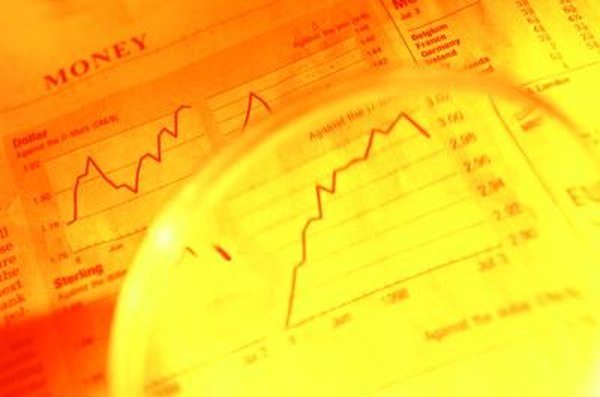The Relationship Between Money Supply & Stock Prices
The money supply and stock prices are closely correlated.
John Foxx/Stockbyte/Getty Images
Money supply is one of the most basic parameters in an economy and measures the abundance or scarcity of money. Stock prices tend to move higher when the money supply in an economy is high. Plenty of money circulating in the economy both makes more money available to invest in stocks and also makes alternative investment instruments, such as bonds less attractive.
Money Supply
The amount of money in an economy is referred to as the money supply. This consists of far more than the bills and coins circulating. In fact, the physical money makes up less than one-tenth of all the money in a typical, developed economy. The rest of the money in the economy is virtual. The unused line of credit in your credit card account or in that of a large corporation's commercial bank account are considered part of the money supply, because these can be used just as readily as bills and coins to buy goods and services. Economists keep a close eye on money supply, because this figure determines the purchasing power and therefore potential demand for products and services.
The Fed and Interest Rates
The U.S. Federal Reserve Board, often referred to as the Fed, can control money supply through a number of measures. The primary method used by the Fed involves buying and selling Treasury Bills. This results in either withdrawal or addition of money into the economy. The immediate result is a change in interest rates. When there is a lot of money around, it becomes cheaper to borrow it. When the money supply is low, not many individuals and institutions will have funds that they can lend out. The borrowers must therefore offer higher interest rates to be able to borrow. Interest rates are often referred to as the cost of money.
Interest Rates and Stocks
An increase in money supply and the resulting drop in interest rates makes stocks a more attractive investment. When investors can only obtain a low level of return by lending money, whether to a bank or a corporation or by purchasing Treasury bills, they tend to shift more money to stocks. This is often referred to as chasing yield. Imagine an investor who calculates that he needs $500,000 to retire comfortably in 10 years, but has only $400,000 in his retirement account. If bank deposits offer a 5 percent annual interest rate, simply keeping the money in the local bank will result in a balance exceeding $500,000 in 10 years. But if bank deposits yield 2 percent or less, the investor will look for riskier, yet potentially more profitable alternatives, such as stocks.
Increased Demand
An additional reason stocks do well when the money supply is high is the increase in general demand in the economy. When the borrowing rates are low, mortgage rates also decline, making homes more affordable and increasing demand for such items as TV sets, washing machines and so on. Car sales also go up when the financing rates drop. The lower rates partially trickle down to interest rates charged on credit card purchases, and consumers purchase more of essentially every imaginable good and service. The result is an increase in sales for most companies, which increases profits and usually results in higher stock prices.
References
Writer Bio
Hunkar Ozyasar is the former high-yield bond strategist for Deutsche Bank. He has been quoted in publications including "Financial Times" and the "Wall Street Journal." His book, "When Time Management Fails," is published in 12 countries while Ozyasar’s finance articles are featured on Nikkei, Japan’s premier financial news service. He holds a Master of Business Administration from Kellogg Graduate School.

